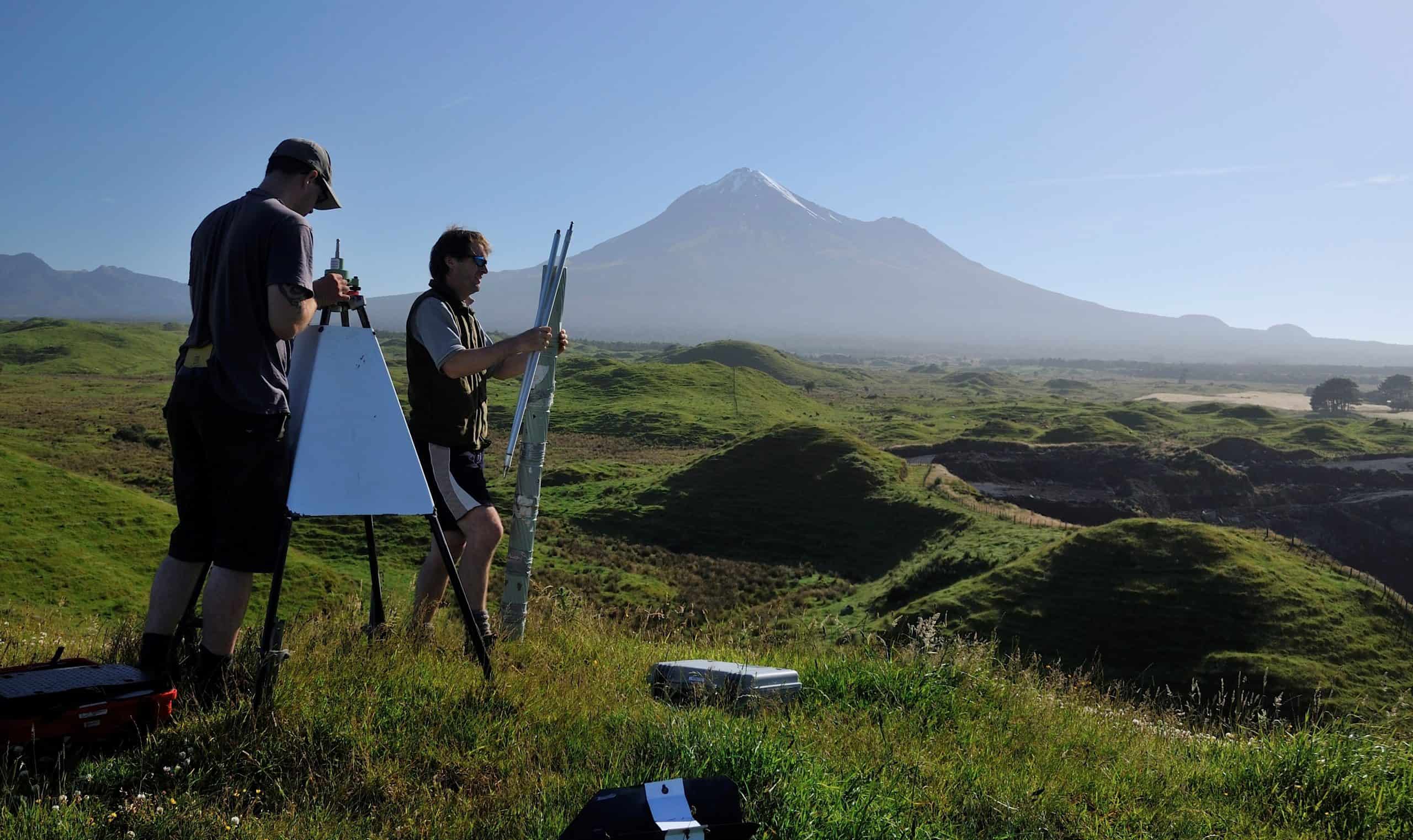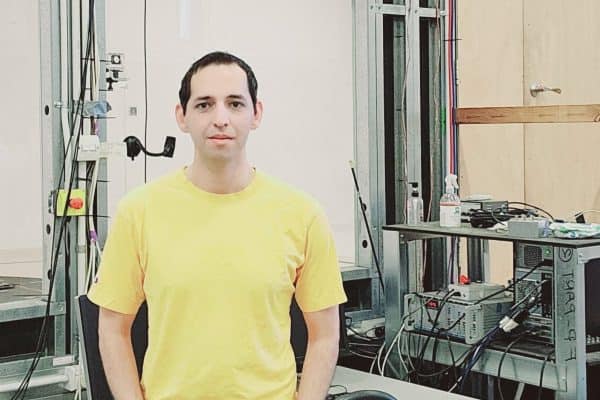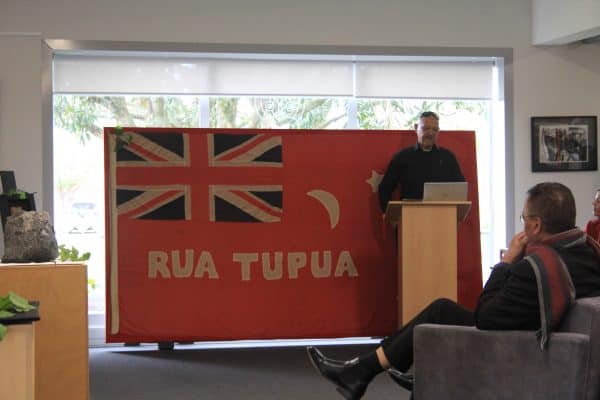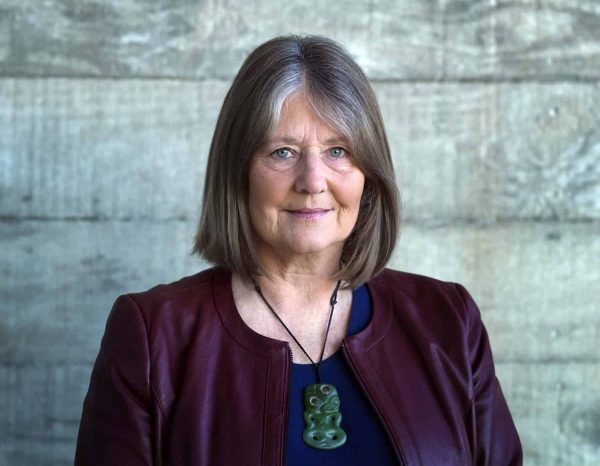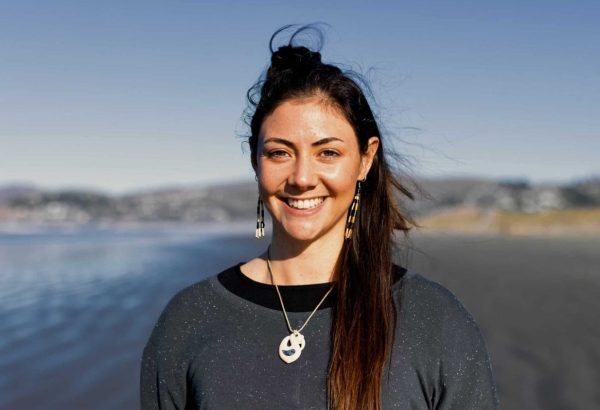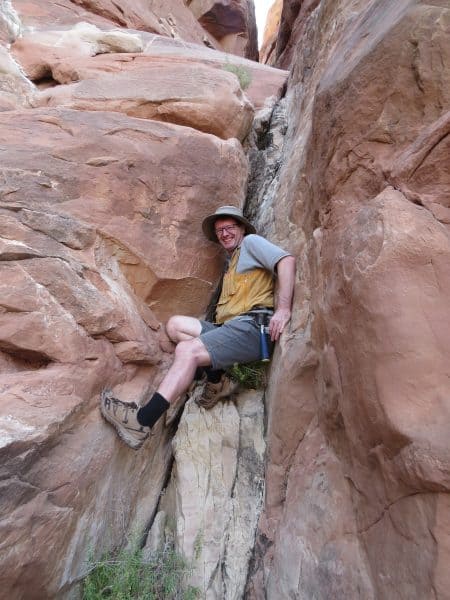 Q. Tēnā koe Andy. Can you tell us a bit about how you got into geology, and how your research career has progressed?
Q. Tēnā koe Andy. Can you tell us a bit about how you got into geology, and how your research career has progressed?
I feel incredibly fortunate to have a career in research and teaching. I was encouraged by my family to attend university at a time when there were few financial barriers and, as a young person, many opportunities to find your way in life. In my first year at university I picked a range of subjects which included earth sciences. As it turned out earth sciences was something that I really enjoyed, which was probably not a great surprise given that I loved being in the mountains and spent many years listening to my grandfather talking about his soil science work.
I really thrived on self-directed research where it was possible to test ideas and to look at the world as it was millions of years ago. By the time I finished I’d been at university for 8 years and people were starting to ask “when are you going to get a real job”. Looking back there was no grand plan of what a real job might look like and, if I’m honest, I caught quite a few lucky breaks along the way.
After my PhD I secured post-doctoral positions in the Fault Analysis Group at Liverpool University (UK) and then at GNS Science. These jobs opened my eyes to the possibilities of research and exposed me to fantastic people, many of whom I am still working with and are good friends. Any success that I might have had in earth sciences can be attributed to the high calibre of these collaborators, to a fascination of the earth and to having a fair measure of tenacity.
Q. You’re now a Professor of Structural Geology at the University of Canterbury. How have you found the transition to university teaching, after many years at GNS Science?
As is the case for many new lecturers, preparing new teaching material is challenging, even if you are like me and had a lot of help from others. Teaching is great fun and gives me the opportunity to paint my fingernails and break frozen Mars bars, which I hope helps the students understand rock deformation and plate tectonics (my finger nails grow at the same rate as plate motion in Christchurch). Research at Crown Research Institutes (CRIs) and universities is very similar. One of the many great things about GNS Science is that it has many experts in different fields of earth science under the same roof, which is scientifically invigorating and promotes strong cross pollination. I am fortunate that I have continued to work closely with GNS scientists and have been able to marry this work with the scientific freedom and expertise offered by the university system. I think that New Zealand research would benefit greatly if we could promote stronger links between CRIs and universities.
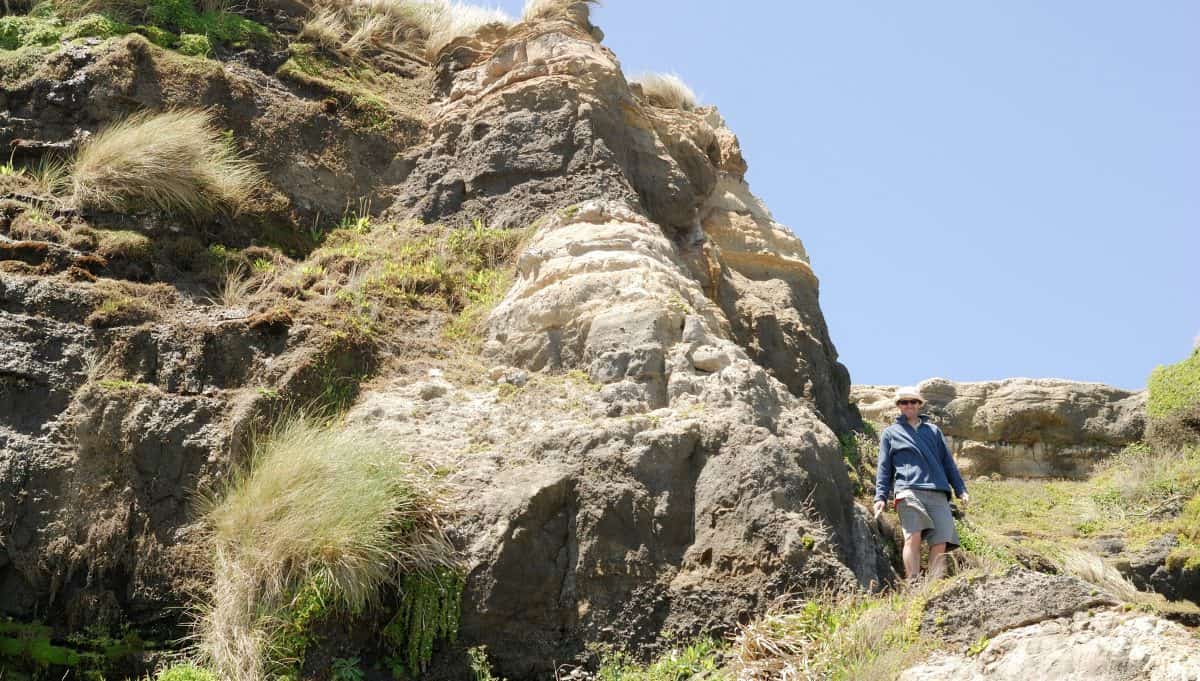
Q. You’re co-leading the Resilience Challenge Earthquake-Tsunami programme. What aspect of the programme excites you most?
I am excited by the prospect of being able to conduct research that will help improve understanding of hazards and benefit all New Zealanders.
Q. The primary goal of the Earthquake-Tsunami programme is to generate synthetic earthquakes using computer models. How did the team get started on the path towards synthetic seismicity?
One of the thankful aspects of natural earthquakes and tsunamis is that the big ones don’t happen very often. The down side of this infrequency is that getting information on more than a couple of earthquakes for individual faults is relatively rare. Limited information from past earthquakes makes the job of forecasting future earthquakes and tsunamis challenging. One way of getting over these limitations is to generate synthetic earthquakes over millions of years using computer programs, which have been developed over the last 30 years. The current Earthquake-Tsunami programme is the culmination of discussions between seismologists and earthquake geologists over last few years. We think that synthetic earthquakes tested against real earthquakes are likely to be the way of the future, and the present programme represents an important stepping-stone for us to improve future earthquake, tsunami and landslide hazard models in New Zealand.
Q. You’ve studied the faulting in the 2016 Kaikōura earthquake extensively. How has that event shaped your current research interests?
An unfortunate truism about earthquakes is that you need to have them to understand them. I found the resilience and generousity of the farming community following the Kaikōura earthquake inspirational. The earthquake is distinguished by the number and complexity of faults that ruptured; many consider the Kaikōura earthquake to be the most complex surface rupture worldwide in the last 150 years. Despite this complexity, it is clear from other historical earthquakes that complex faulting has been very common historically in New Zealand. Understanding why complex earthquakes occur, testing to see if we can generate these earthquakes with our computer models and determining how they impact the timing and size of future earthquakes is a major focus of our work. We are hoping that ongoing studies of the faults that ruptured in the Kaikōura earthquake and computer modellings will provide value insights to these questions.
Q. What do you like to do outside work?
For many years I enjoyed spending time with my family and helping raise our two daughters, who have become awesome people. In recent years I have spent time travelling and, unfortunately, generating a sizeable carbon footprint. I also enjoy working with wood and have constructed many low-tech wooden structures, often with a lot of help from YouTube and my brother, who actually knows what he is doing.
Q. What are your future research ambitions?
Our research ambitions need to have stretch. The holy grail of earthquake research is to improve earthquake forecasting, which is many years behind weather forecasting. In New Zealand we are already using statistical analysis to forecast earthquakes on some faults and I have no doubt that with a better understanding of earthquake processes these forecasts will improve. This view is not held by all of my colleagues, and some will likely question my sanity for raising this subject. While better forecasts may be decades away, they have the potential to significantly improve our resilience to earthquake and tsunami hazards and, for me, is an important ambition.
